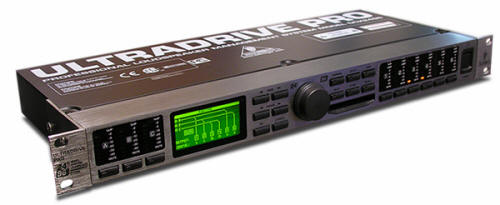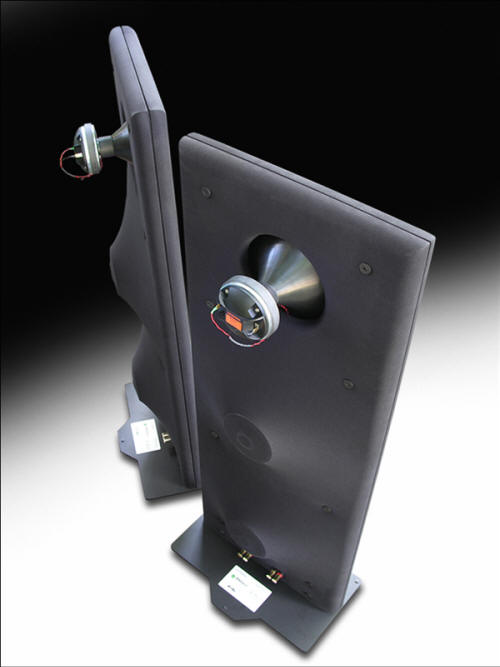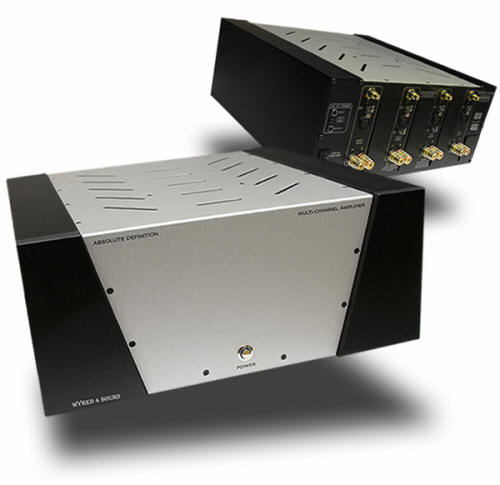
You are reading the older HTML site
Positive Feedback ISSUE
may/june 2008
emerald physics
CS2 loudspeakers, part 1
as reviewed by John Potis

|
I don't normally appreciate sales pitches. Particularly if I'm going to be reviewing the product in question my policy is usually just send me the product and let me hear it. If I feel we need to talk before I write, I'll be in contact. But one day I received a rather cryptic Email from Underwood HiFi's Walter Liederman asking me to give him a call at my convenience. What was to follow was a one-sided sales pitch to top all sales pitches. It lasted almost an hour and were it not for two things, I probably would have been rather put off by the whole thing. The first is that Liederman's not exactly new to the game of audio—he's been involved in audio for some three decades and was, at one time, senior partner in HiFi Buy's, an Atlanta based chain of stores. Since then he's dabbled in several other concerns and for the last several years he's been operating Underwood HiFi, an Internet based sales and distribution company. Liederman should know something about both audio and the business behind it, too. The second reason is that what he was telling me certainly did sound interesting and if not revolutionary, certainly forward thinking.
He was telling me about the $3,500 Emerald Physics CS2 loudspeakers and to paint the entire picture he did require most of that hour because there was a lot of story to tell.
First, the man behind Emerald Physics is one Clayton Shaw, probably best known for the boutique line of speakers from Evett & Shaw. Shaw's no newbie to the scene either and has been studying the design of loudspeakers since 1978 with a special interest in loudspeaker behavior and the search for what may be unconventional solutions to conventional obstacles. In 2007 Shaw introduced the CS2 and it's anything but conventional.
The CS2 loudspeaker starts with a dipolar design with two 15-inch woofers mounted on an open baffle. To them is added a 1-inch compression driver mounted in a 12-inch horn/wave guide. Throw in two pairs of binding posts without a crossover and the speaker is done. There's no crossover to be found on the speaker anywhere because the CS2 uses a computer to sew all the parts together.
The Behringer Ultra Drive Pro DCX2496 is the brain of the outfit and more. It's the electronic crossover and a DSP powerhouse that makes the speaker work. Its functions include digital signal processing of the loudspeakers behavior including control of the amplitude response, active crossover duties, and time alignment. When Emerald Physics speaks of time alignment what they're really talking about is phase and time coherency, which are accomplished in the digital rather than the physical domain. The drivers are not staggered and the speaker is not canted rearward; time alignment is accomplished in the digital domain through buffering. The crossover is something that cannot be duplicated via the usual methods. The CS2's crossover from the dual woofers operating in tandem to the Selenium compression driver is at 1kHz with both high pass and a low pass slopes of 48 decibels per octave. That's not new but what we have here is a crossover performed in the digital domain, which allows for total phase coherency despite the extremely steep slope. It's the phase coherency that can't be achieved through the conventional use of resisters and compactors, but it can when done digitally.

The Behringer arrives pre-programmed with equalization settings said to produce an f3 of 20 Hz. Between 100Hz and 20kHz the speaker is said to be equalized flat to within +/- .5 db. That's one-half of a decibel. Again, all equalization is performed in the digital domain and the CS2 suffers absolutely no ill effects known to plague other methods of equalization. Of course, it's one thing to be flat in an anechoic chamber; it's another to achieve such linearity in the room. Emerald Physics has addressed that, too.
First, from 20Hz up to the point where the woofers hand off to the compression driver at one-kilohertz, the speaker is dipolar. That means that from 1kHz down to about 100 Hz a null is created to the side of the speaker. A null is that point where the output from the front of the speaker cancels out the out-of-phase output from the rear of the speaker (these are box-less, remember?) and the speaker effectively has no output to its sides. No output to the sides of the speaker means no first reflections from sidewalls to muck up either the on-axis frequency response or the summed power response, which includes the contribution of reflected signals into the room. Of course, bass frequencies are long and much more difficult to deal with. Well, ordinarily, anyway. Emerald Physics has taken care of that, too. They've measured the effects of room boundaries on the bass output and they've come up with equalization settings to compensate for them. The CS2 requires a minimum of 3 feet to the wall behind them. The Behringer is preprogrammed with the corresponding EQ settings for incremental distances beyond that, too, should you like your speakers further out into the room. The only adjustment one needs to make at the Behringer is to dial in the distance from the front wall (the wall behind them) and it takes care of everything for you. Simple. And if the thought of three feet out from the wall bothers you, remember, these are basically flat panel speakers—there's no box. I doubt there are many audiophiles that don't situate their speakers such that the speaker faces are much less than 3 feet away from the wall. In my room, the CS2s go pretty much where the fronts of most speakers are located.

From a 1kHz on up, the speakers are not dipolar—no rear reflection to worry about, but no sidewall cancellation either. So the compression driver is mounted into a 12-inch wave-guide or short horn. So completely does the horn control dispersion that sidewall reflections are minimized. But what's even more amazing is Emerald Physic's claim that at the speaker's crossover point, the radiation pattern of the woofers matches the radiation pattern of the compression driver leading to a much more coherent and consistent radiation pattern through the crossover region than that achieved with most speakers. It is through this complete control of dispersion and digital equalization that Emerald Physics can almost guarantee a perfect fit in any listening room. Both the dipolar radiation of the woofers and the controlled directivity of the compression driver work to take the variations between rooms out of the equation and ensure the flattest frequency response possible.
OK, I hear you. You're saying that you've heard systems equalized to flat and they're bright, harsh, and fatiguing. I've heard them, too, and you're exactly right. But here's the difference: when you EQ a conventional system, you're not just correcting the frequency response of the speaker's on-axis output, you're also changing the total contribution of energy introduced into the room as well as the energy reflected off the walls, ceiling, and floor. In other words, you're boosting the treble energy within the system's power response, which includes the sum total of the speaker's output, as well as all that increasing energy now bouncing off the walls, ceiling, and floor. The controlled directivity of the CS2 means that you can control the on-axis frequency response of the system without throwing the room's power response out of kilter because room reflections are minimized. The speaker's output is flattened, but the room doesn't become unnaturally bright and harsh.
Liederman wasn't shy about telling me that the Eminence woofers used in the CS2 are all off-the-shelf professional components. This means several things. First, the components are reliable. Second, should something go wrong they're easily replaced. Third, they're cost effective. He says that they could spend a lot more money on woofers that may outperform these. But they'll cost a lot more money and they'll radically increase the final price of the CS2. A better option, and the path taken by Emerald Physics, is to use the digital equalization to correct for the measured anomalies of these workhorse drivers.
Aesthetically, if you find the CS2 a little utilitarian in appearance, you won't get much of an argument from me. But there are some options here. First, you can order them with the horn exposed for the entire world to see or you can have it covered by the grill cloth. Just let them know; there's no change in price. Grill cloths available include the standard black and three $200 options that include beige, blue and red. There's also one other thing that makes the CS2 more domestically acceptable than you may think-- at first.
Getting back to that controlled directivity thing, Emerald Physics suggests starting with the speakers toed in such that they fire right at the listener. In my room I actually ended up with the compression drivers such that their axis crosses right in front of me. That's some heavy-duty toe-in. A lot of speakers would look silly that way—with all that side of the speaker's enclosure showing. But not these. Since these look like panel speakers, they look quite natural with such toe-in. And when situated thusly, the speakers actually appear to be less wide than they are. And as they are panels, they take up a lot less room than boxes would and they don't dominate the room and draw the eye nearly as much.
For sure, the one downside to the whole CS2 concept is that it requires four channels of amplification. Liederman has worked to make this as painless as possible, too. He's working with California's Cullen Circuits, the manufacturer of the Wyred 4 Sound brand of electronics to come to the rescue. If Wyred 4 Sound or Cullen Circuits is new to you then you need to know that they've been around for years and have been producing OEM products for PS Audio, among other notables. Recently PS Audio has gone offshore for their production and Liederman found Cullen more than happy to work with him. What they came up with was a very interesting solution.
Wyred 4 Sound makes amplifiers utilizing Bang & Olufsen's Ice-based analog-switching power modules—the same modules said to be used by Bel Canto, Jeff Rowland, and many others. They also went to Bascom King to design the amplifier's input circuit with an input impedance of 61k ohms making the amps compatible with tube preamps.

As Liederman sells Internet direct, he's able to sell the Wyred 4 Sound amplifiers at a substantial savings over the competition. How big a savings? Well, the amplifier I was sent includes two channels that produce 500 watts into 8 ohms—said to be the same modules used in my own Bel Canto eOne Reference 1000 mono amplifiers—as well as two channels that produce 125 watts each. That's four channels of amplification with a combined output of 1250 watts, for $2995. That's a thousand dollars less than the price of my two monos from Bel Canto— which still represents only two of the four channels required for the CS2.
By utilizing any of the several Ice modules available, Liederman will have your power amplifiers configured in a variety of ways. He's currently got a number of even less costly options including a version with a pair of 250-watt modules for the bass working in conjunction with the same 125-watt modules for $2495—a savings of another $500. An even less expensive version is in the planning stages. My review sample came with room for three more modules of amplification. As Emerald Physics is working on a center channel speaker, getting the amplifier outfitted with two more channels of amplification may be a wise move, should such a thing prove of interest.
If you're wondering why the two different levels of power, that's another good question. Ordinarily, one would always use more power for the bass than the midrange/treble. The CS2 makes that mandatory. The compression driver has an efficiency of 100 dB as do the woofers. However, the woofers are equalized with a boost at the bottom in order to achieve the 20Hz extension, which makes them more like 90 dB sensitive. That means that even more power will be a great idea.
Build quality on the Wyred 4 Sound amps is good. The binding posts are as solid as are input terminals— they feature both XLR and RCA. The power switch operates with silky-smoothness and is encircled with a thin blue LED, which is a nice touch. The amplifier looks quite nice sitting there but when you lift it, it's surprisingly light. First, the power models are light and they don't require huge and heavy transformers. Second, while the sheet metal is certainly adequate for the job, it presents the appearance of being heavier than it really is. That's not a slight, though. It looks nice and heavy jewel-like casework is expensive. Better to save the money, I would think. If you disagree there are lots of other more expensive amplifiers out there from which you can choose.
There are a couple other features of the Wyred 4 Sound amps, which are not often found. First, they feature—in each and every channel—a ground lift switch in case you encounter a 60Hz ground loop hum. Also, the less powerful channels can be ordered with a high-pass filter for use with smaller speakers—if you're not using speakers with bass, why should the amplifier work to produce it? 80Hz filters are standard but custom values can be installed upon ordering for an additional $100.
By now you may be wondering why Liederman, a retailer, is so involved with Emerald Physic's marketing and why he's been so instrumental in their packaging with the Wyred 4 Sound amplifiers. Good question. The answer is that Walter Liederman and Underwood HiFi is now the sole US dealer for Emerald Physics. And that probably raises yet another question: why in the world only one retailer and an Internet retailer to boot? Well, there's a simple answer to that, too. Well, sort of.
Reviewers love giant-killers. Buyers love giant-killers. Everybody loves giant-killers, right?
No, not actually. Dealers hate giant-killers. They despise giant-killers! They love to hide them in the corner where customers won't notice them unless they come in actually looking for them. Why? Because they steal sales from much more expensive gear—the giants. If you're a dealer and you make 50 points on a sale, would you rather sell a pair of speakers for $10k or $3500? If you want to stay in business you'll want to sell the more expensive speakers every time. So for this reason, Emerald Physics has had a really hard time setting up normal brick and mortar distribution. Dealers either won't let them in the door—no matter how good they sound, or they won't demo them if they know the buyer has the means and a larger budget. So Emerald Physics needed to go to a different business model. Enter Liederman and Underwood HiFi. Liederman isn't concerned about selling up to more expensive products. He has the Internet presence to reach a great many more audiophiles than the average brick and mortar shop. He knows the speakers, he knows what they can do and all he needs for success is to get as many audiophiles to try them in their homes as possible. He thinks the speakers will close the deal every time. From what I'm told, they have. He's sold 60 pairs without a single return. Some of his customers are audiophiles who already own much more expensive gear and for whom the asking price is… well… pocket change. They've bought them on a lark just to see if they live up to the hype and a number of them find themselves preferring them to what they've already got. With that comes word-of-mouth sales and there may be some plans in the future whereupon owners can be persuaded to allow interested buyers a demonstration. They won't be involved in the transaction but may be able to earn some sort of commission.
Well… how do they sound? In a word; phenomenal. Right out of the box the speakers are amazing. I don't know of another speaker in this price range that can compete in several aspects of their performance. Does that mean that they're for everybody? Well, no speaker is for everybody. But the full review is going to have to wait as the speakers are said to take up to 400 hours of use before fully broken in. At that point I'll report back. But in the meantime if you're in the market for a pair of speakers and if what I've said so far appeals to you, you'll want to investigate them on our own. They are definitely worth your consideration; that much I can say without a doubt. John Potis
CS2 Loudspeaker
Retail: $3500 ($6495 as reviewed with Wyred 4 Sound amplification)
Emerald Physics
Corporation
6300 N. Sagewood
Drive
Suite H361
Park City Utah 84098
USA
TEL: 435.640.1294
web address:
www.emeraldphysics.com
Underwood HiFi
9960 Bankside Drive
Roswell GA, 30076
USA
TEL: 770.667.5633
email address:
[email protected]
web address:
www.underwoodhifi.com
Wyred 4 Sound
2323 Tuley Rd. Unit A
Paso Robles, CA 93446
TEL: 805.237.2113
web address:
www.wyred4sound.com
